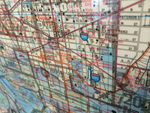With a population of seven million and a total land area less than half the size of Luxembourg (or Rhode Island), Hong Kong is one of the most densely populated areas in the world. The best place to appreciate this is atop Victoria Peak, where you can feast your eyes on Hong Kong's famous harbor and, as far as the eye can see, high-rise apartments and office buildings. If Hong Kong were a vast plain, it would be as ugly as Tokyo. But it's saved by undulating mountain peaks, which cover virtually all of Hong Kong and provide dramatic background to the cityscape and coastal areas. Indeed, viewed from Victoria Peak or the Tsim Sha Tsui waterfront, Hong Kong is one of the most beautiful cities in the world.
Hong Kong offers visitors something highly unique -- the chance to experience a vibrant Chinese city without sacrificing the comforts of home. To be sure, much of Hong Kong's Western fabric comes from the legacy left by the British, who ruled the colony until 1997, when it was handed back to China as a Special Administrative Region (thus the SAR abbreviation you'll see there and throughout this guide). British influence is still evident everywhere, from Hong Kong's school system to its free-market economy, from its rugby teams to its double-decker buses, and from the English pubs and tea in the afternoon to (my favorite) orderly queues. But though the city was molded by the British, it has always been, at heart, Chinese, with Chinese medicine shops, street vendors, lively dim sum restaurants, old men taking their caged birds for walks, and colorful festivals.
It's this juxtaposition of the past and present, and the extreme differences between street life and the high life, that has fueled my love affair with Hong Kong for more than 20 years. Ancient temples stand alongside some of the world's tallest skyscrapers; quaint villages slumber on the fringes of densely packed satellite towns; colorful traditional festivals share the stage with highbrow entertainment. I can eat dim sum for breakfast, cross Victoria Harbour on the historic Star Ferry, hike through a tropical landscape, scout for souvenirs at a street market, get a massage at a state-of-the-art spa, and zip over to Macau for a Macanese meal -- all in 1 day. Hong Kong's talent at constantly reinventing itself never ceases to amaze me; the promise of boundless possibilities draws me back again and again.
Hong Kong was founded as a place to conduct business and to trade, and it continues to serve that purpose both aggressively and successfully. Hong Kong is the "Wall Street of Asia," with banking, international insurance, advertising, and publishing among its biggest industries. Hong Kong boasts the world's 13th-largest trading economy and is one of the world's leading exporters of toys, garments, and watches. Little wonder, then, that as a duty-free port, Hong Kong attracts approximately 29 million visitors a year, making tourism one of its leading industries.
This section highlights how Hong Kong came to be the way it is today, providing, I hope, some insight for the experiences you will surely have of your own.
Note: This information was accurate when it was published, but can change without notice. Please be sure to confirm all rates and details directly with the companies in question before planning your trip.








